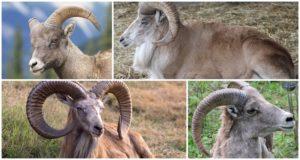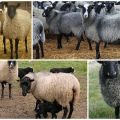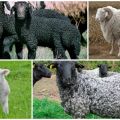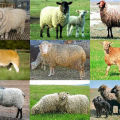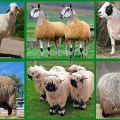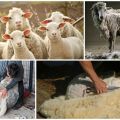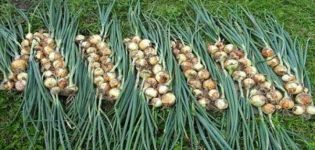Names and characteristics of Georgian sheep breeds, which one is better to choose
There is an intensive development of sheep breeding in the world, which is not surprising. The industry's products are diverse: dairy and meat products, wool. For breeding of the popular Georgian sheep breeds, they use a distant pasture system and a stationary or semi-stationary one. To increase the breed productivity, zoning schemes are used, the condition of pastures is improved.
Georgian sheep breeds
To preserve the purity of the Georgian sheep breeds, avoiding their crossing with other breeds - this is the way of breeding small ruminants is chosen by the Georgian government. Three breeds are popular with farmers: Imeretian, Tushino and fine-wooled fatty-tailed. Official Tbilisi plans to adhere to the developed veterinary standards, since Georgian breeds show good productive qualities.
For a long time, Georgian breeders have been working on breeding sheep breeds adapted to difficult growing conditions. The animals are accustomed to mountain and pasture maintenance, poor grazing.
Which one is better to choose?
When choosing, you need to consider several factors: productivity, content features. Each breed has both pros and cons, which are reflected in the table.
| Breed name | Distinctive qualities | pros | Minuses |
| Fine-wooled fat-tailed | rams gain weight up to 119 kg, and uterus - up to 96 kg. Exterior features: strong bones, well-developed musculature forms a trunk with wide withers and chest. The limbs are strong and well placed. White wool grows in length 8-12 cm, fineness 60-64, is used to make a lint-free smooth material | develops well in mountain conditions, has a stable immunity, the yield of pure wool is 47-54%. | low shearing, 6 insufficiently equalized in thickness, low live weight in comparison with other breeds |
| Tushinskaya | cattle gains a small mass: rams weigh 65-70 kg, uterus - 35-45. Thanks to their strong bones, animals can easily overcome long distances. Shiny elastic wool grows 12-25 cm long and is used to create carpets and fleece. Milk is processed into a variety of dairy products (feta cheese, cottage cheese, cheese) | endurance, the possibility of year-round keeping in pastures, high-quality meat of young animals does not have a characteristic odor | low fertility, suitable for breeding in mountainous areas |
| Imeretinskaya | animals are small in size: rams grow at the withers 48-55 cm high, gain weight 22-36 kg, uterus weigh 20-29 kg. Body features: high strong legs, small torso, short neck. Thick white wool grows 12-16 cm long, has a silky sheen and is suitable for making broadcloth, handmade felt products | fertility (females come to hunt at any time of the year), a high rate of hair shearing | the main disadvantage is a low milk content |
The listed breeds are the most popular. In the conditions of small farms, small cattle of other breeds are bred: southern meat, Georgian.
Features of the content
The relief of Georgia is very diverse. Based on the characteristics of the area, rules for keeping small ruminants are formed. In mountainous areas, they are engaged in distant pasture breeding mainly of Tushino sheep. In Georgia, this is the main way of keeping small ruminants. The animals are driven to mountain pastures in spring and to low-lying ones in autumn.
The haul distance is 10-500 km. The cattle is unpretentious in feed, keeping conditions, adapted to the harsh highlands.
In the conditions of stationary and semi-stationary sheep breeding, fine-woolen fat-tailed and Imeretian sheep are bred. Animals are kept in specially equipped rooms, divided into separate stalls. In good weather (summer and winter), the sheep are kept in open areas. The transition from a winter diet to a green one (grazing on pastures) is carried out gradually.
When choosing a content, in addition to the breed, climatic features of the area, agricultural technology of land plots are also taken into account. The conditions for raising and keeping livestock are important for increasing productivity. The increase in the yield of dairy, meat, wool products directly depends on compliance with the requirements for keeping individuals. You also need to adhere to the feeding and grazing schedules, seasonal runs.
